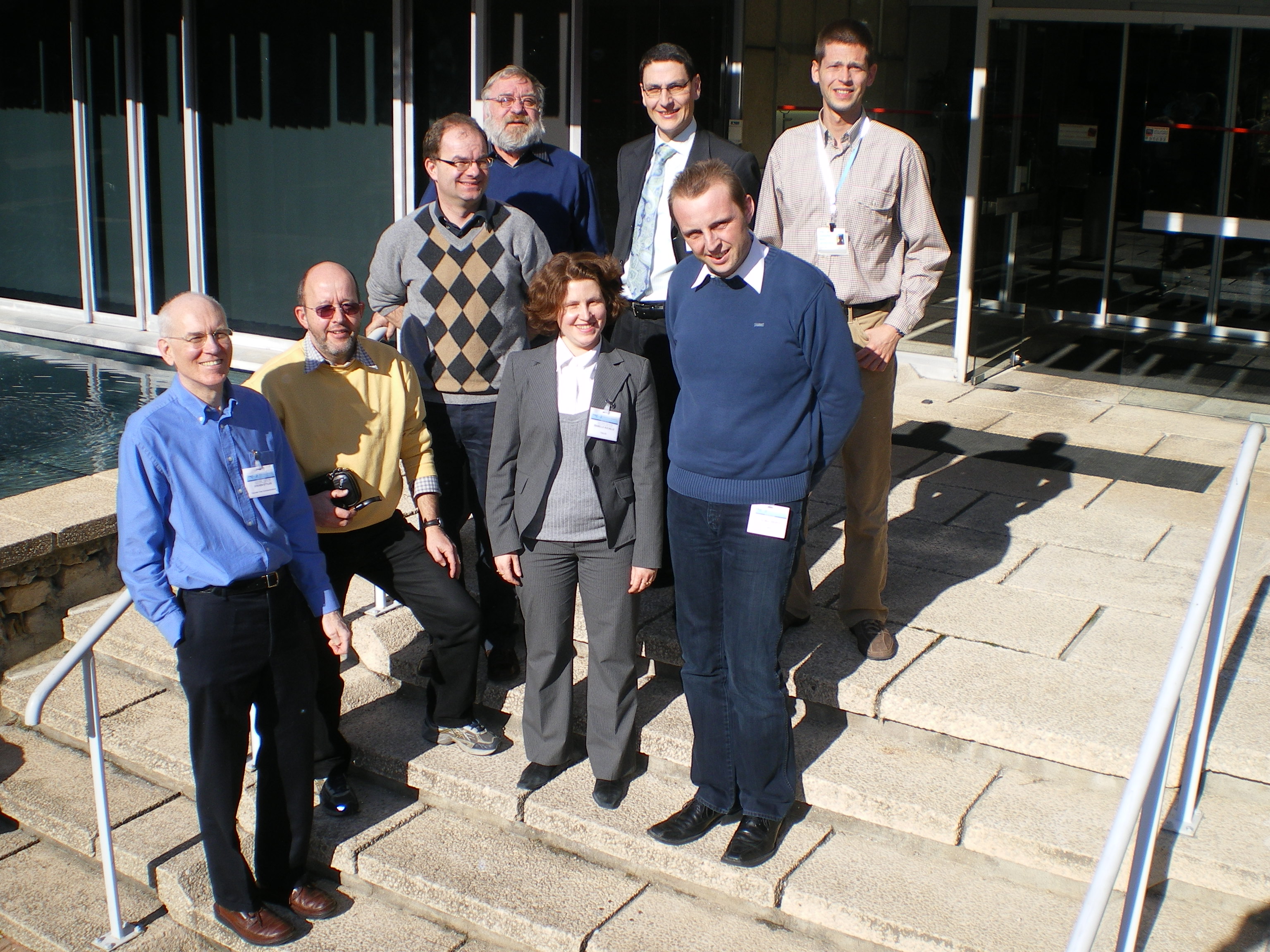Specialist Task Force 350: Detect-And-Avoid (DAA) parameters and test procedures for Ultra-Wideband
communications applications
Who we are:
Team Leader: Sebastian MUELLER,
ETSI
Team Members: Friedbert BERENS, STMicroelectronics
Hartmut DUNGER, BOSCH
Udo USCHKERAT, FGAN
Steven ETTLES, Discrete Time Communications

What we do:
The purpose of the work
is to achieve co-existence of UWB communications devices having the DAA
mechanism with victim radio services such as broadband wireless access systems,
future mobile services systems and radiolocation systems.
For the complete
standardisation of the mechanisms, suitable technical parameters and test
procedures are needed. These include flexible mechanisms based on multiple
detection thresholds and multiple operating zones providing adequate protection
levels for victim services as defined in CEPT/ECC-TG3 (e.g. broadband wireless
access systems, future mobile services systems and radiolocation systems).
The scope of the CEPT/ECC-TG3
Mitigation technique working group is to define the “DAA regulatory
requirements” content and to leave to the standardization committee (ETSI) the
responsibility to specify technical DAA parameters and test procedures.
Time plan for the work:
The STF will produce the following
deliverables:
DTS/ERM-TG31A-0114 Short
Range Devices (SRD) using Ultra Wide Band technology (UWB) for communications
purposes. Scope is to provide a technical description of the DAA mitigation
techniques for UWB implemented technologies), covering the following items:
DAA-1 (protection of S-band radar), DAA-2 (protection of WiMAX) and DAA-3
(protection of X-band radar).
DTR/ERM-TG31A-0115 Short
Range Devices (SRD) using Ultra Wide Band technology (UWB) for communications
purposes. Scope is to provide the different RF compliance tests for the DAA
mechanism of UWB implemented technologies.
according to the following time scale:
DTS/ERM-TG31A-0114:
- Start of the work mid-February 2008
- First stable draft TS for TG31A
review March 2008
- Stable draft for TG31A
review April 2008
- Final Draft for TG31A
approval 16 April 2008 (TG31A#22)
- TB approval by delegation to
TG31A 17 April 2008 (TG31A#22)
DTR/ERM-TG31A-0115:
- Start of the work September 2008
-
Final Draft for TG31A
approval December 2008
Liaisons:
WALTER project:
http://www.walter-uwb.eu/
The validation of DTS/ERM-TG31A-0114 and DTR/ERM-TG31A-0115 requires the
availability of radio equipment for measurements as well as test laboratories.
Through the WALTER project, test laboratories can contribute free of charge.
Contents of DTS/ERM-TG31A-0114 and DTR/ERM-TG31A-0115
can be used as input to the WALTER project.
ECC TG3:
Liaison Statement on DAA mitigation
technique.
How to contact us:
If you would like more information, please contact the STF Leader:
sebastian.mueller@etsi.org
About FGAN and FHR:

The Forschungsgesellschaft für Angewandte Naturwissenschaften
(FGAN – Research Establishment for Applied Science) has embodied excellence in
applied research in the field of military technology for 50 years.
FGAN’s institutes originally began as university workgroups whose research was
of high interest for the Bundeswehr (German armed forces). The importance of
this research led to the decision that this research be carried out within the
framework of a central establishment.
It consists of three research institutes which are
predominantly active in the field of Command and Control:
FHR
Research Institute for High Frequency Physics and Radar Techniques,
http://www.fhr.fgan.de/fhr/fhr_en.html
FKIE
Research Institute for Communication, Information Processing & Ergonomics
http://www.fgan.de/fkie/fkie_en.html
FOM
Research Institute for Optronics and Pattern Recognition
http://www.fgan.de/fom/fom_en.html
FGAN researches and compiles knowledge needed to support and
advise the Bundeswehr on its innovative strategies, processes and sourcing.
In particular, the task of FGAN is to identify potential
areas of utilization, so that technological advances can be optimally
implemented within the specialized environment of military deployment.

About the FGAN Research Institute for High Frequency
Physics and Radar Techniques (FHR):
Concepts, methods and electromagnetic sensor systems are developed at the
institute, particularly in the field of radar. This is done in close conjunction
with novel signal processing methods and innovative technologies in the
frequency range from meterwave to lower Terahertz.
The institute’s expertise, which is manifested by highly
complex experimental systems that are developed and maintained in-house, covers
almost every aspect of modern radar techniques. Thus it secures national client
counselling and judgement capability in the field of military technology.
BIO of FGAN’s STF 350 expert:
Dr. Udo Uschkerat
Udo Uschkerat has 12 years experience in military radio
location systems, 10 years experience with UWB GPR devices. The latter
experience means a strong background in UWB sensors. He is a consultant for GE
MIL NARFA in ECC TG3 since 2005, there mainly working on coexistence problems of
UWB short range devices with (mil.) radiolocation systems.
Other interests: mine detection, target classification and identification based
on radar signal analysis.
This information is based upon STF working assumptions.
The views expressed do not necessarily represent the position of ETSI in this
context.
Last updated: 2008-04-30 15:36:05